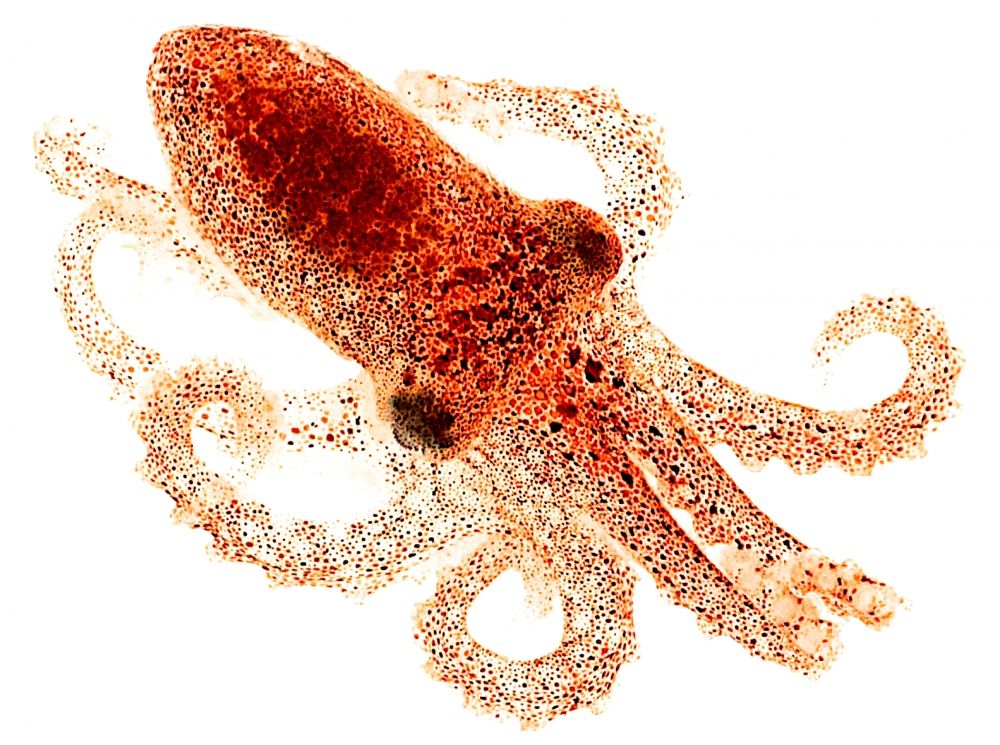
Octopus camouflage is remarkable. One could easily waste (enrich?) an hour of the work day watching videos of octopuses emerging from texturally complex undersea landscapes that looked completely devoid of cephalopods moments before.
How do they do it? Scientists already knew that octopuses can change the color, pattern and texture of their skin at will by sending signals from their eyes to cells called chromatophores in their skin, which contain pigment and can expand and contract to change their appearance. Now, in a paper published Wednesday in the Journal of Experimental Biology, a team of scientists at the University of California Santa Barbara relate that octopus skin can sense and respond to light even without receiving signals from the eyes or brain, using much the same biological tools as utilized by their eyes (and our eyes). In short, octopus skin can "see" light, no eyes required.
As it turns out, the skin of the California two-spot octopus (the species selected by researchers to study this phenomenon) contains the same type of light-sensitive proteins that are found in its eyes. Called opsins, these proteins can respond to light in the octopus's environment and can direct the chromatophores to expand and contract to match—all from within the skin, and without interaction with the animal's central nervous system.

"Octopus skin doesn't sense light in the same amount of detail as the animal does when it uses its eyes and brain," Desmond Ramirez, a doctoral student at UC Santa Barbara and the lead author on the study, said in a statement. "But it can sense an increase or change in light. Its skin is not detecting contrast and edge but rather brightness."
The discovery was made by shining white light on tissue from the California two-spot octopus. The chromatophores expanded in response, and changed color, indicating that the chromatophores were responding to input that couldn't be coming from the eyes or brain. Molecular experiments followed, and Ramirez found rhodopsin, a type of opsin typically found in the eye, present in the sensory neurons of the skin.
The discovery adds new information to the body of knowledge about how octopuses camouflage so remarkably well. According to Todd Oakley, a professor at UC Santa Barbara and a co-author on the study, this mechanism, dubbed "Light-Activated Chromatophore Expansion," or LACE, is a clear example of the organism's evolution. "It looks like the existing cellular mechanism for light detection in octopus eyes, which has been around for quite some time, has been co-opted for light sensing in the animal's skin and used for LACE," he said in a statement. "So instead of completely inventing new things, LACE puts parts together in new ways and combinations."
Uncommon Knowledge
Newsweek is committed to challenging conventional wisdom and finding connections in the search for common ground.
Newsweek is committed to challenging conventional wisdom and finding connections in the search for common ground.
About the writer
Zoë is a senior writer at Newsweek. She covers science, the environment, and human health. She has written for a ... Read more





